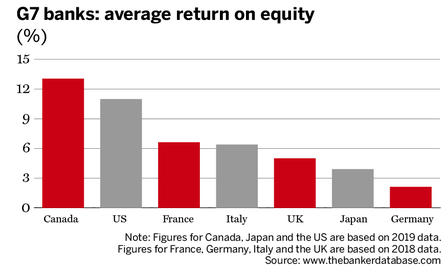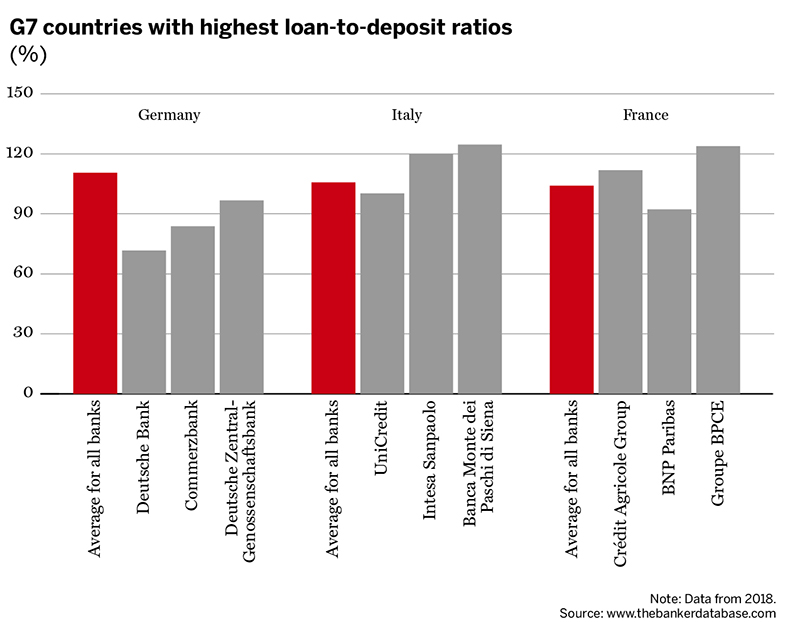How prepared are G7 banks to cope with coronavirus?
Banks across the G7 are entering this period of significant turbulence from differing starting positions, as Marie Kemplay reports.
As the number of cases of the Covid-19 virus continue to increase, it is having a significant impact on the global economy. Although China remains the country that has been most affected by the outbreak, it is now affecting hundreds of countries across the globe, including all seven of the G7 group of advanced economies, Canada, France, Germany, Italy, Japan, the UK and the US - to varying degrees.
As the world enters a potentially lengthy period of disruption, Banker analysis shows that each country’s banks are starting from very different positions. In profitability terms, as an average across all banks, only the US and Canada’s banks have a return on equity (RoE) of more than 10%, at 13.05% for Canada and 10.99% for the US, according to the most recent data available for all seven countries. In Germany and Japan, RoE across all banks is the lowest out of the seven economies at 2.13% and 3.92% respectively, although the situation does vary by bank.
Liquidity measures also vary considerably. Germany, Italy and France’s banks have the highest loan-to-deposit ratios, which measure total outstanding loans as a percentage of deposits. In the coming months banks are likely to face pressure to offer customers, who are facing hardship, repayment holidays on mortgages and other loans, and may see higher levels of default. The loan-to-deposit ratios across all banks in each of these countries were 110.56%, 105.76% and 104.11% as of 2018. In Italy, two of the country’s largest banks by Tier 1 capital have loan-to-deposit ratios of 120% or higher, and in France two of the largest banks have ratios of more than 110%. This is not the case in Germany, where all three of its largest banks have ratios of less than 100%. The higher average in Germany is driven by higher loan-to-deposit ratios at smaller banks as well as at Landwirtschaftliche Rentenbank, a rural and agricultural development bank.
At a macroeconomic level, over the past week we have seen both central banks and governments across the world announcing measures designed to support economies. This includes the US Federal Reserve cutting interest rates to almost zero and announcing it will be restarting a programme of quantitative easing, as well as co-ordinating efforts with other central banks to ensure the global supply of dollars. There is also expected to be further co-ordination between G7 economies in the coming weeks. It remains to be seen how well G7 economies, and their banks, will be able to weather this storm.




